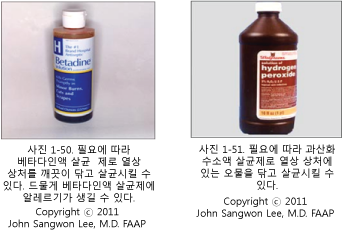How to treat laceration wounds with the least small scars 흉터가 작게 생기게 열상 상처 치료 법
How to treat laceration wounds with the least small scars
흉터가 작게 생기게 열상 상처 치료 법
- How to prevent the scars after laceration treatment
- There are no special drugs that can treat scars after a laceration, and there is no special treatment method.
- When very small, shallow lacerations are treated properly and well treated, scars are usually very small or rarely.
- Depending on the depth and size of the laceration wound, the body part of the laceration wound, the presence or absence of an infectious disease in the laceration wound, the treatment method after the laceration, the race of the patient, and individual differences, the size and scar condition of the scar after the laceration may be different.
- The laceration wound can heal better and less scarring if the laceration wound is treated as follows:
- If the edges of the skin wound caused by laceration are open to each other, the length of the laceration wound is 1~1.2cm or more, and the length of the laceration wound on the face is 0.6mm or longer, it is common to undergo suture surgery.
- You must receive suture surgery within at least 4 to 12 hours after you suffer a laceration.
- If necessary, immediately after the laceration, wash the lacerations thoroughly with soapy water.
- Remove the dirt from the laceration wound properly
- Apply antibiotic ointment or sterilize with disinfectant Treat the laceration so that germs and dirt don’t get on it anymore.

- The laceration wound with a sterile disposable band-aid or sterile gauze to treat If the laceration wound does not fester (so that it does not become infected with bacteria), sterilization treatment, observational treatment, and festering should be treated appropriately soon to reduce scarring.
- Depending on the size and depth of the laceration wound and the body part of the laceration, suture surgery is performed.
- Remove the suture in a timely manner and remove any scabs from the wound.
- After the laceration is healed, prevent the injured body part from getting trauma.
-
- If the laceration wound is infected with bacteria and festers, it is appropriately treated early with antibiotics.
- If necessary, get a tetanus vaccine with a tetanus vaccine. It takes approximately 6 to 12 months for the laceration and wound to heal completely and the scar to be invisible.
- Treatment methods may differ depending on the regular children and adolescents and doctors.
